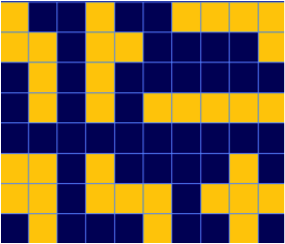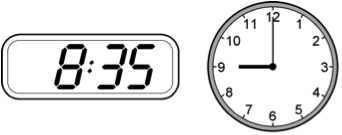Teachers should use every relevant subject to develop pupils’ mathematical fluency. Confidence in numeracy and other mathematical skills is a precondition of success across the national curriculum.
– National Curriculum in England Framework Document, September 2013, p10
Connections within Mathematics
Making connections to other topics within this year group
Addition and subtraction
- add and subtract numbers mentally including:
- a three-digit number and ones
- a three-digit number and tens
- a three-digit number and hundreds
- solve problems, including missing number problems, using number facts, place value, and more complex addition and subtraction
When working on measurement and/or addition and subtraction there are opportunities to make connections between them, for example:
Finding totals and change in money problems, e.g. Ali spent £2.50 on a packet of pencils and £4.75 on a pencil case. What was her change from £10?
Adding/subtracting different lengths, masses or capacities e.g. Sam had two litres of juice in a jug. He poured 750ml into his flask. How much juice was left in the jug?
Solving problems that involve adding times and finding the differences between them e.g. Sally went to the park at 4 o’clock, she left for home at 5:15. For how long was she at the park? The train left Leicester station at 2:15pm. It took one hour and 55 minutes to arrive in London. At what time did the train arrive in London?
Multiplication and division
- recall and use multiplication and division facts for the 3, 4 and 8 multiplication tables
When working on measurement and/or multiplication and division there are opportunities to make connections between them, for example: Comparing measurements, e.g. this pencil is 5cm in length. That pencil is 3 times longer. How long is the longer pencil?
Fractions
- count up and down in tenths; recognise that tenths arise from dividing an object into 10 equal parts and in dividing one-digit numbers of quantities by 10
- recognise and use fractions as numbers: unit fractions and non-unit fractions with small denominators
When working on measurement and/or fractions there are opportunities to make connections between them, for example:
A millimetre is 1/10 of a centimetre, ½ a kilogram is 500g, 1/10 of a litre is 100ml
Showing ¼ past, ½ past and ¼ to the hour on an analogue clock ¼ of an hour is 15 minutes, ½ and hour is 30 minutes, ¾ of an hour is 45 minutes
Making connections to this topic in adjacent year groups
Year 2
Statutory requirements:
- choose and use appropriate standard units to estimate and measure length/height in any direction (m/cm); mass (kg/g);temperature(0C); capacity (litres/ml) to the nearest appropriate unit, using rulers, scales, thermometers and measuring vessels
- compare and order lengths, mass, volume/capacity and record the results using >, < and =
- recognise and use symbols for pounds (£) and pence (p); combine amounts to make a particular value
- find different combinations of coins that equal the same amount of money
- solve simple problems in a practical context involving addition and subtraction of money of the same unit, including giving change
- compare and sequence intervals of time
- tell and write the time to five minutes, including quarter past/to the hour and draw the hands on a clock face to show these times
- know the number of minutes in an hour and the number of hours in a day.
Notes and guidance:
Pupils use standard units of measurement with increasing accuracy, using their knowledge of the number system. They use the appropriate language and record using standard abbreviations.
They become fluent in telling the time on analogue clocks and recording it.
Pupils become fluent in counting and recognising coins. They read and say amounts of money confidently and use the symbols £ and p accurately, recording pounds and pence separately.
Year 4
Statutory requirements:
- convert between different units of measure (e.g. kilometre to metre, hour to minute)
- measure and calculate the perimeter of a rectilinear figure (including squares) in centimetres and metres
- find the area of rectilinear shapes by counting squares
- estimate, compare and calculate different measures, including money in pounds and pence
- read, write and convert time between analogue and digital 12 and 24-hour clocks
- solve problems involving converting from hours to minutes; minutes to seconds; years to months; weeks to days.
Notes and guidance:
Pupils build on their understanding of place value and decimal notation to record metric measures, including money.
They use multiplication to convert from larger to smaller units. Perimeter can be expressed algebraically as 2(a + b) where a and b are the dimensions of the same unit.
Perimeter can be expressed algebraically as 2(a + b) where a and b are the dimensions in the same unit.
They relate area to arrays and multiplication.
Cross-curricular and real life connections
Measurement is a practical application of mathematics in real life. For example, during most days of our lives we work with money. We often estimate and/or calculate length, mass, capacity and time e.g. how long it will take us to travel somewhere, what time we need to leave home to get to an appointment, how much water to put in the kettle to make a mug of coffee.
Within the science curriculum there are many opportunities to connect with measurement, for example in the Programme of Study: working scientifically, it states that during years 3 and 4, pupils should be taught to use practical scientific methods, processes and skills through the teaching of the programme of study content, e.g.
- setting up simple practical enquiries, comparative and fair tests
- making systematic and careful observations and, where appropriate, taking accurate measurements using standard units, using a range of equipment, including thermometers and data loggers





